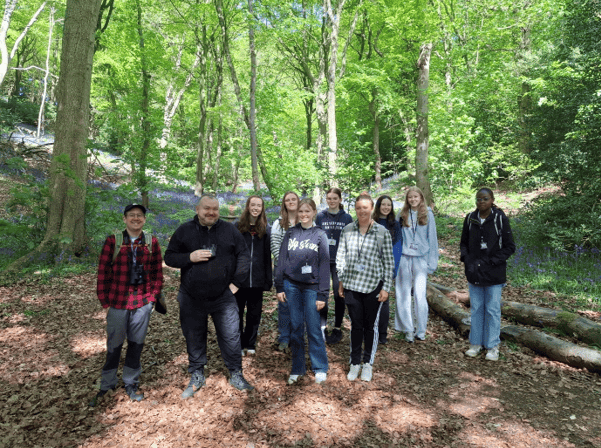
Fourteen biology students with a shared passion for conservation recently enjoyed an inspiring visit to Durham University, where they met with the university’s Biodiversity Manager, Ian Armstrong, for an in-depth exploration of local ecology and biodiversity work.
As part of the visit, students were given a guided tour of the university-owned Great High Wood—a biodiverse ancient woodland managed to support native wildlife and promote ecological resilience. Ian Armstrong offered an immersive overview of the woodland’s ecosystem, explaining how it is maintained to encourage biodiversity and provide a sanctuary for threatened species.
The experience provided students with a valuable opportunity to connect their classroom learning with real-world conservation practices, helping to broaden their understanding of environmental science and sustainability.
Jennifer Oliver-Armitage, one of the students who took part, commented: “It was a fantastic way to spend a Friday! I discovered that bluebells are actually toxic, that holly trees evolve in a manner that allows them only to be spiky close to the ground to evade predators eating their leaves, and not at the top since we don’t have giraffes in England, and that a past or somewhat recent sign of a patch of open land/ a field is an oak tree growing outward rather than upward. A very enjoyable and informative trip.”
Ellie Maw, student also added “I really enjoyed the trip and found it super interesting, especially as we got taught things that fall outside of the college curriculum.”



